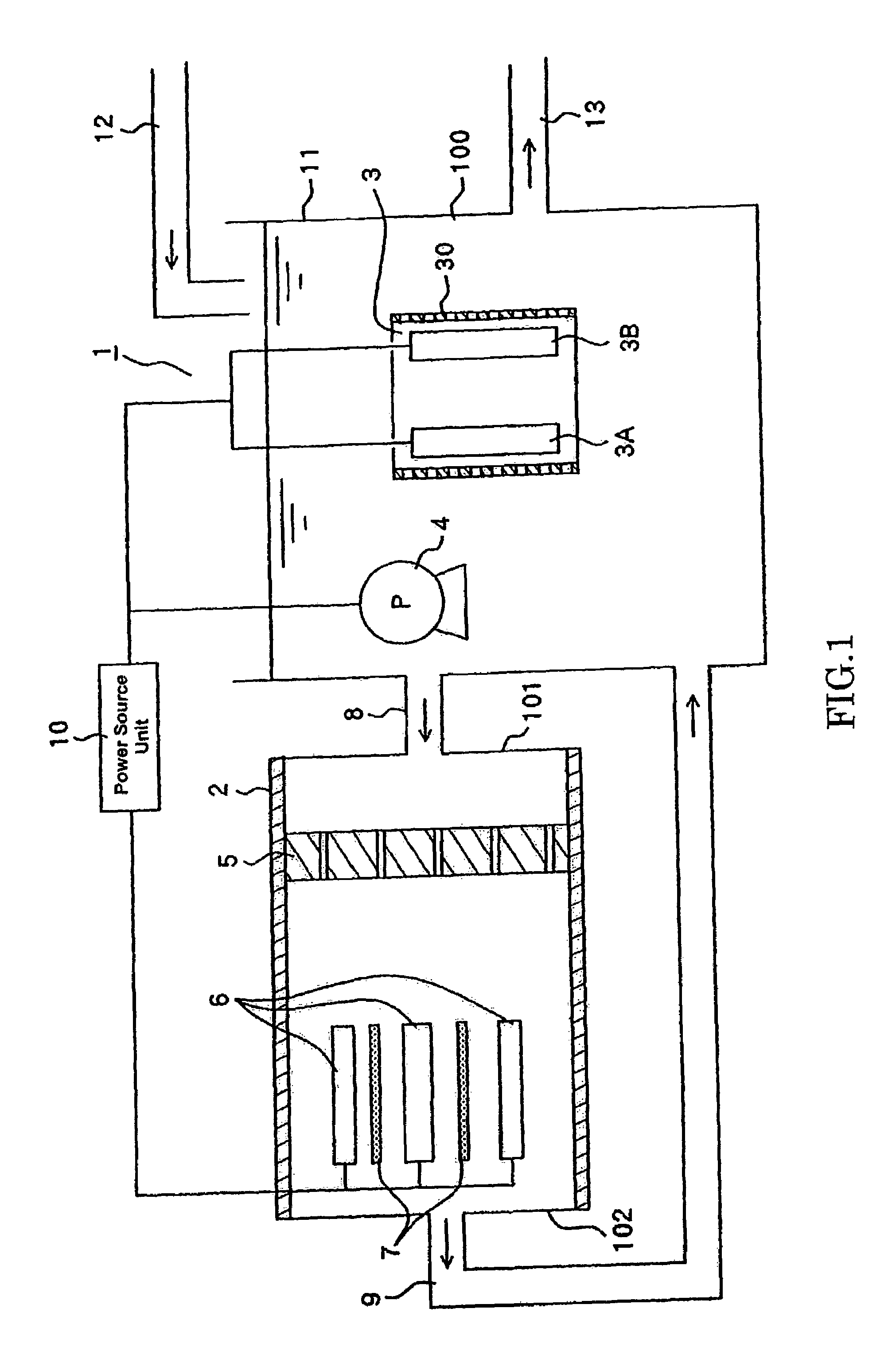Photocatalyst water treating apparatus
a photocatalytic water and water treatment technology, applied in chemical/physical/physical-chemical processes, chemical/physical processes, water treatment nature, etc., can solve the problems of clogging of piping, serious problems, and all conventional photocatalytic water-processing technologies face the same problems
- Summary
- Abstract
- Description
- Claims
- Application Information
AI Technical Summary
Benefits of technology
Problems solved by technology
Method used
Image
Examples
examples
[0105]The present invention will now be described with reference to an exemplary experiment, which is not intended to limit the scope of the invention in any way.
[0106]In this experiment, the water 100 to be processed is industrial circulation water (tap water) and the reservoir 11 used was a 10-ton open cooling tower. The water temperature in the cooling tower was 25° C. during water processing. The electrodes 3A and 3B of the electrode unit 3 were each a 4 cm×20 cm platinum-plated expanded titanium alloy plate. A 16V DC voltage was applied to the electrodes 3A and 3B for the water processing. The pump 4 was an inverter-controlled 0.75 kw pump manufactured by Hitachi, Ltd. The filter 5 was a 140-mesh polypropylene fabric. Two 14W low-pressure mercury lamps that emit radiation with a wavelength of 254 nm were used as the UV-lamps 6. The photocatalyst carriers 7 were each an expanded titanium dioxide piece.
[0107]In this experiment, a photocatalytic water-processing system 1 having th...
PUM
| Property | Measurement | Unit |
|---|---|---|
| output voltage | aaaaa | aaaaa |
| voltage | aaaaa | aaaaa |
| oxidation-reduction potential | aaaaa | aaaaa |
Abstract
Description
Claims
Application Information
 Login to View More
Login to View More - R&D
- Intellectual Property
- Life Sciences
- Materials
- Tech Scout
- Unparalleled Data Quality
- Higher Quality Content
- 60% Fewer Hallucinations
Browse by: Latest US Patents, China's latest patents, Technical Efficacy Thesaurus, Application Domain, Technology Topic, Popular Technical Reports.
© 2025 PatSnap. All rights reserved.Legal|Privacy policy|Modern Slavery Act Transparency Statement|Sitemap|About US| Contact US: help@patsnap.com



